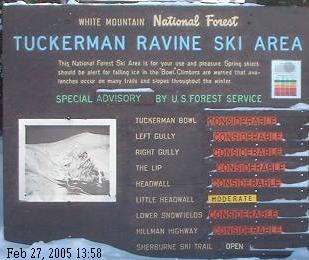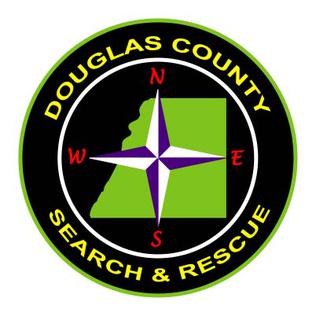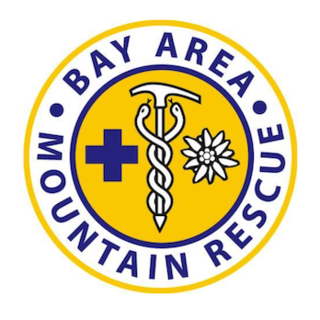
Search and rescue (SAR) is the search for and provision of aid to people who are in distress or imminent danger. The general field of search and rescue includes many specialty sub-fields, typically determined by the type of terrain the search is conducted over. These include mountain rescue; ground search and rescue, including the use of search and rescue dogs ; urban search and rescue in cities; combat search and rescue on the battlefield and air-sea rescue over water.

Mountain rescue refers to search and rescue activities that occur in a mountainous environment, although the term is sometimes also used to apply to search and rescue in other wilderness environments. This tends to include mountains with technical rope access issues, snow, avalanches, ice, crevasses, glaciers, alpine environments and high altitudes. The difficult and remote nature of the terrain in which mountain rescue often occurs has resulted in the development of a number of specific pieces of equipment and techniques. Helicopters are often used to quickly extract casualties, and search dogs may be deployed to find a casualty.

Ski patrols are organizations that provide medical, rescue, and hazard prevention services to the injured in ski area boundaries, or sometimes beyond into backcountry settings. Many have technical-medical certifications, such as Outdoor Emergency Care (OEC) provided by the National Ski Patrol (USA), that are specific to the winter-season environment and providing emergency medical services in remote locations. Many patrollers also hold EMS issued credentials, such as emergency medical technician or any other pre-hospital care certification. Due to the remote location and terrain, transportation is often limited to Rescue toboggan, snowmobile, or, for life-compromising injuries or extremely remote terrain, helicopter rescue. Depending on the ski area terrain, ski patrollers can be versed in a large variety of specialized rescues, such as avalanche search and rescue, outdoor emergency transportation, chairlift evacuation, and, in some cases, helicopter rescue techniques are taught. Patrols work to promote ski safety, enforce area policies, and help the injured within their jurisdiction. Ski patrollers also work to set up the mountain before it opens by conducting trail checks, providing avalanche control work, and setting up necessary equipment in preparation for the day. At the end of the day, they also conduct a sweep clearing the mountain for off-hours.

The Bridger Wilderness is located in Bridger-Teton National Forest in Wyoming, United States. Originally established in 1931 as a primitive area, 428,169-acre (1,732.74 km2) region was redesignated as a wilderness in 1964 and expanded to the current size in 1984. The wilderness lies on the west side of the Continental Divide in the Wind River Range and contains Gannett Peak; at 13,809 feet (4,209 m) it is the tallest mountain in Wyoming. The wilderness is a part of the Greater Yellowstone Ecosystem.
Explorer Search and Rescue (ESAR) are teams of Explorers in the Learning for Life program of the Boy Scouts of America who are trained and deployed for search and rescue missions. Well-developed ESAR programs emerged in the state of Washington in the mid-1950s and were followed by others in California and elsewhere. The rugged, mountainous terrain of these areas often require massive amounts of manpower for proper searches for missing people, not to mention their rescue and evacuation from remote areas. The ESAR mission has also expanded over the years to include urban search and rescue and other disaster-related disciplines. Many ESAR groups also provide wilderness safety training to the public.

Mounted search and rescue (MSAR) is a specialty within search and rescue (SAR), using horses as search partners and for transportation to search for missing persons. SAR responders on horseback are primarily a search resource, but also can provide off-road logistics support and transportation. Mounted SAR responders can in some terrains move faster on the ground than a human on foot, can transport more equipment, and may be physically less exhausted than a SAR responder performing the same task on foot. Mounted SAR responders typically have longer initial response times than groundpounder SAR resources, due to the time required to pick up trailer, horse(s), and perhaps also water, feed, and equipment.

Avalanche rescue involves locating and retrieving people who have been buried in avalanches.
In the United States, mountain rescue is handled by professional teams within some national parks and by volunteer teams elsewhere. Volunteer teams are often members of the Mountain Rescue Association (MRA).

Marin County Search and Rescue is an all-volunteer organization in Marin County within Marin County Sheriff's Office. With approximately sixty active members, Marin County's Search and Rescue responds to searches for missing children and adults, evidence and other search requests in the county and on mutual aid calls anywhere in the state of California. Marin SAR is a mountain rescue Type I team with the motto of: "Anytime, Anywhere, Any Weather."

The San Diego Mountain Rescue Team (SDMRT) is a volunteer organization in San Diego County, California, operating under the jurisdiction of the San Diego County Sheriff's Office. With approximately 70 active members, SDMRT responds to calls at any time to search for and rescue missing, injured or stranded persons in San Diego County and, through mutual-aid requests, in other counties within the state of California.
CALSTAR is a regional air medical services company serving California and northern Nevada. It operates as a nonprofit air ambulance provider on the West Coast.
Three Waters Mountain is located in the northern Wind River Range in the U.S. state of Wyoming. Three Waters Mountain straddles the Continental Divide and is in both Bridger-Teton and Shoshone National Forests. The mountain receives its name from being the triple point between the watersheds of the Colorado, Columbia, and Mississippi Rivers.
Bastion Peak-Northeast Peak 13,476 ft (4,107 m) is located in the Wind River Range in the U.S. state of Wyoming. The peak is one of the highest in Wyoming, and is connected to its taller neighbor Bastion Peak by an arête to the southwest. An unnamed glacier lies below the precipitous east flank of the mountain, while Gannett Glacier is to the south.
Mount Lander is located in the central Wind River Range in the U.S. state of Wyoming. Mount Lander is within the Wind River Indian Reservation. The Lander Glacier consists of three distinct glaciers on the north and west slopes of Mount Lander, with the westernmost glacier being the largest. Baptiste Lake is 1 mi (1.6 km) long and is on the southeast base of Mount Lander and the famous northeast wall of Mount Hooker is another mile south of the lake.

Mount Hooker is located in the Wind River Range in the U.S. state of Wyoming. Mount Hooker was named for Joseph Dalton Hooker, the prominent 19th-century British botanist and explorer. The north and east slopes of Mount Hooker present some of the tallest and steepest vertical cliffs in Wyoming, and the peak is also remote, being more than 20 mi (32 km) from a road. The formidable 1,800-foot (550 m) north face of Mount Hooker was first climbed in 1964 by Yosemite Valley climber Royal Robbins, along with Dick McCracken and Charlie Raymond, who took over three days to scale the cliff face. In 2013, a team free climbed one pitch rated at class 5.14a, grade VI during a multiple-day ascent requiring five other pitches rated above 5.12.
Bears Ears Mountain is a mountain located in the southern Wind River Range in the U.S. state of Wyoming. Bears Ears Mountain is 1.32 mi (2.12 km) east of Mount Chauvenet and consists of two peaks which from a distance resemble the ears on a bear.
Valentine Mountain is a 11,147-foot (3,398 m) mountain located in the southern Wind River Range in the U.S. state of Wyoming. Valentine Mountain is .42 mi (0.68 km) northwest of Valentine Peak. Valentine Mountain is in the Popo Agie Wilderness of Shoshone National Forest.

Juneau Mountain Rescue (JMR) is a mountain search and rescue agency, located in Juneau, Alaska, United States. JMR is a member of the Alaska Search and Rescue Association, and facilitates rescues involving wilderness terrain, rope rescues on rock faces, ice and snow fields, glaciers, and during avalanches, medical evacuations, missing persons cases, aircraft crashes and other disasters. An all-volunteer organization, JMR coordinates with Capital City Fire/Rescue, the Juneau Police Department, the Alaska State Troopers, the United States Coast Guard, and other emergency response agencies during search and rescue operations.

Douglas County Search and Rescue is an all-volunteer organization in Douglas County within Douglas County Sheriff's Office. With approximately sixty active members year-round, Douglas County's Search and Rescue responds to searches for missing children and adults, evidence and other search requests in the county and on mutual aid calls anywhere in the state of Colorado. Douglas SAR is a mountain rescue Type I certified team able to handle the toughest terrain and remain out in the field without resupply for extended periods.

The Bay Area Mountain Rescue Unit (BAMRU) is an all-volunteer, non-profit wilderness search and rescue team specializing in operations involving difficult terrain, challenging weather conditions and high altitude. BAMRU is affiliated with the San Mateo County Sheriff’s Office and operates throughout California.











